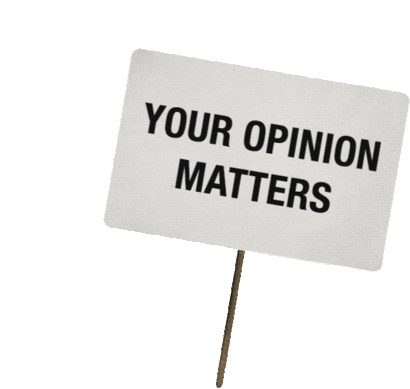Did you know that your customers' opinions can not only change the game, but also save your business? I have personally witnessed how simple public opinion research led to a 30% increase in sales in just three months. Let's dive into the techniques and tools that will help you harness this power to its fullest.

Glossary
🌍 Public opinion monitoring: systematic collection and analysis of people's opinions, sentiments and perceptions on certain issues or topics related to business or society.
🎯 Monitoring methods: various methods used to collect and analyze data on public opinion, including surveys, focus groups, analysis of social media and Internet publications.
📊 Monitoring tools: software and online solutions that help automate the process of data collection and analysis, such as Google Surveys, SEMrush and others.
🗨️ Focus group: research method, in which a group of people discuss certain topics under the guidance of a moderator, which allows the underlying opinions and feelings of the participants to be revealed.
📈 Data analysis: the process of processing and interpretation collected information to identify trends and formulate recommendations based on the results obtained.
💬 Social media: online platforms, such as Facebook, Twitter, Instagram, which are used to monitor users' opinions and interactions with brands and products.
🔍 Qualitative and quantitative methods: approaches to Research where qualitative methods focus on a deep understanding of opinions, and quantitative methods on statistical analysis of data using surveys and questionnaires.
🛠️ Analytical dashboards: data visualization tools, which help track and interpret changes in public opinion over time, usually present data in graphs and charts.
🔄 Feedback loop: process, thanks in which a business receives feedback from customers and audiences, allowing it to make adjustments and improve products or services based on public opinion.
💡 Case studies: specific cases of successful companies , who used public opinion monitoring to optimize their business processes and improve customer experience.
Why public opinion monitoring is important for business
During my experience, I have repeatedly noticed how monitoring public opinion can radically change the way a company operates. Think about it, when was the last time you listened to what your customers were saying? Without even realizing it, many companies often ignore the opinions of consumers, as a result of which they lose the ability to adapt to changing market demands.

On one of my previous projects, I worked on launching a new product in the field electronics. We conducted a survey to find out what exactly the target audience cares about. The end goal was clear: to launch a product that, as our preliminary research showed, was truly interesting to users. But, as often happens, reality hit the scales with full force.
What a surprise when, after the first round of surveys, it became obvious that our specially designed interface did not offer the most convenient functions. Moreover, only 30% of respondents expressed a positive opinion about our product. I remembered how our PR manager at that moment said: “If we don’t interest them, then failure will be inevitable.” This phrase has stayed with me forever.
Every review, positive or negative, became a persistent reminder to take action. We changed the interface, did some simple work to improve the functionality based on the comments received, and eventually launched the product, making sure that customers were happy with it. Selling has become easier, and risks have been minimized thanks to positive user reviews. This is how simple monitoring of public opinion has become an advantage for business success.
How Public Opinion Monitoring Impacts Reputation
The importance of public opinion monitoring also relates to brand reputation management. I realized this when there was a misunderstanding about the quality of our products. We have received a significant amount of negative feedback on one of our product lines, with users reporting problems. As a result, negative mentions on the Internet damaged our reputation. The need for monitoring became increasingly obvious: if we did not pay attention to this, the consequences would be catastrophic.

It's helpful to remember that 70% of consumers now read reviews and comments before purchasing. This is a living reality that can make or break a business's reputation. I became convinced that every negative review is a chance to improve the product and make the business more successful. Think about what would happen if you could anticipate possible problems by monitoring the opinions of your customers? You will not only create a loyal audience, but also stimulate business growth.
Effective Methods for Monitoring Public Opinion
Now let's talk about the methods that can be used to monitor public opinion. I have personally selected a few that have proven to be quite effective. For example, qualitative research using focus groups. This method made it possible to learn in practice that certain details of the product are actually very important to users. Focus groups provide an opportunity to elicit sometimes very personal opinions that users are not always willing to express in surveys.
Another approach is social media monitoring. I used special tools that collected reviews about our products from various sites, which made it possible to quickly respond to negative reviews, minimizing damage.
.gif)
- 📊 Surveys are the easiest way to see how your products are received in practice.
- 🗣️ Focus groups are an opportunity to better understand what you heard and hear the needs of clients.
- 🌐 Social media analysis - quickly identify problems by monitoring online feedback.
The collected data can not only point out problem areas, but also suggest ways to solve them. So, gather your team, do some data analysis, and take action.
A quick guide to monitoring public opinion
| Step | Action | Explanation |
|---|---|---|
| 1 | Set your goals | Why do we need monitoring? What do you want to know? |
| 2 | Select methods | Surveys, focus groups, social media? |
| 3 | Collect data | Use automation tools |
| 4 | Analyze the results | Visualize data, find patterns |
| 5 | Implement changes | Respond to feedback, improve the product |
By following these rules, you can create a monitoring system that will not only help you avoid mistakes, but will also give you the opportunity to make a product that your customers will love.
.png)
Often asked questions on the topic: Monitoring of public opinion
1. What is public opinion monitoring?
Public opinion monitoring is a system for collecting, analyzing and interpreting data on the opinions and perceptions of the population on various issues related to business or the social sphere.
2. Why monitor public opinion?
Public opinion monitoring allows you to identify the needs and preferences of your target audience, which helps a business adapt its strategy and improve products or services.
3. What methods exist for monitoring public opinion?
There are various methods such as surveys, focus groups, social media analysis, monitoring reviews and ratings, and content analysis.
4. What tools can be used to monitor public opinion?
Popular tools include Google Trends, Social Mention, Brandwatch, SurveyMonkey and other public opinion analysis and survey platforms.
5. How to analyze data obtained as a result of monitoring?
Data analysis involves statistical techniques, data visualization, and the assessment of major trends to obtain a clear picture of public opinion and its changes.
6. How often should public opinion be monitored?
The frequency of monitoring depends on the specifics of the business, but it is recommended that it be carried out regularly, especially during periods of change or before the launch of new products.
7. How can monitoring public opinion help in crisis situations?
Monitoring allows you to quickly identify negative reviews and reactions, which helps a business respond quickly and manage its reputation in times of crisis.
8. What examples of successful monitoring of public opinion can be given?
Examples of successful monitoring include campaigns from major brands that used customer feedback to improve products, as well as social media strategies to engage audiences.
9. What mistakes should be avoided when conducting monitoring?
It is important to avoid ignoring the data obtained, undersampling, and unclear wording of questions that can distort the results.
10. What are the prospects and future of public opinion monitoring?
With the development of technology and an increase in the volume of data, monitoring of public opinion will become more accurate and automated, which will provide businesses with new opportunities for analysis and forecasting.
Thank you for reading and for becoming a better reader! 🙌
Monitoring public opinion is not just a trend, it is the key to the success of your business. Now you know how to collect valuable insights, analyze them, and apply them to grow your company. I came across a project where, using public opinion analysis tools, we were able to improve the product by 30% in just a few months! Your approach must be proactive to stay one step ahead. Share your thoughts in the comments! I'm ready to discuss your ideas! 💡
— Vladimir Kosygin, independent expert at "Elbuz".

Article Target
Inform businessmen and marketers about the importance of monitoring public opinion.
Target audience
Marketers, business owners, students interested in marketing and sociology.
Hashtags
Save a link to this article
Vladimir Kosygin
Copywriter ElbuzWords are tools, and my mission is to breathe life into online store automation. Welcome to the world of my texts, where every line fills business with meaning and efficiency.
Discussion of the topic – Public opinion monitoring
Consideration of the importance of monitoring public opinion and its impact on business. Discussion of methods, tools and examples of successful application.
Latest comments
15 comments
Write a comment
Your email address will not be published. Required fields are checked *




















.png)



Александр
I absolutely agree that monitoring public opinion is important! With the help of social networks you can quickly get feedback. My company was recently able to improve a product based on customer feedback. 🚀
Marina
Alexander, write in more detail, how exactly did you do this? Such examples are always inspiring! I also believe that improvement through feedback is the key to success! 🌟
Леонардо
Agree! If your public opinion is not on your side, then how to develop? I use surveys and questionnaires. Understanding customer needs helps to find new niches. 💡
Светлана
I love using Instagram for monitoring! I often post polls in stories, this helps me understand what is interesting to my subscribers. 📱
Гарри
Fair! I'm always interested in how competitors react to customer opinions. This is a great way to learn from others. 🔍
Владимир Косыгин
It is important to understand that public opinion is not always objective. But, yes, its monitoring allows you to quickly respond to changes and implement approaches that respond to customer requests. 🤔
Дитер
Vladimir, what do you think about the quality of the data received? There is often too much noise in opinions. 🎧
Каролина
Dieter, you are absolutely right, but this is precisely the challenge – to separate the wheat from the chaff! I like to use analytical tools for this. 📊
Гарри
I use analytics too! This helps make the choice of strategies more motivated. What instruments do you prefer? 🛠️
Григорий
All these trends around are funny. Public opinion, as a rule, has no basis. Why waste time on it? 😒
Мария
Gregory, but without analyzing customer opinions, we may not notice how we are rejecting our customers! This is important to stay afloat. ✨
Владимир Косыгин
Grigory, I understand your dissatisfaction, but without working with public opinion, we risk remaining in the past. This is the key to staying relevant. 👍
Giulia
Do you think it is important to take cultural differences into account when monitoring? In Italy, brand perception can be very different from other countries. 🌍
Леонардо
Exactly, Giulia! I have also noticed that what works in one culture may not work in another. This really requires a detailed approach. 🌐
Светлана
This is interesting! I'm always studying how different cultures perceive advertising. Maybe we can exchange examples? 😄